








By: Holly Smith, PCAM Executive Director CAI-CV
When I accepted the position of Executive Director, I knew the journey would come with challenges. Every mission requires patience, adaptability, and teamwork — and while we’ve faced obstacles, each one has made us stronger. Progress comes not from perfection, but from persistence and unity.
I’m proud to share that we’ve successfully launched the 2026 Sponsorship Plan along with our new theme: “Go Boldly.” For Trekkies, the phrase is familiar, but its meaning resonates far beyond pop culture. In the Star Trek universe, exploration is fueled by courage, curiosity, and most importantly, inclusiveness. Whether you’re a blue Andorian or a fierce Klingon, all are welcome in the Federation when they share the same mission.
I see CAI-CV the same way. We are united by a shared goal: to elevate the HOA industry and the communities we serve. Like a starship crew, everyone plays a vital role — managers, business partners, board members, and volunteers alike. Strong relationships and collaboration are the foundation of our success.
However, challenges arise when we forget that we’re on the same team. In a community as small and interconnected as ours, negative words or actions travel fast and can easily create division. None of that helps our chapter grow.
We must also recognize that our business partners are the backbone of CAI-CV. Their investment and support fuel our programs, but they cannot carry the chapter alone. Managers play a critical role by attending educational and

social events, engaging fully, and supporting those who support them. When managers and business partners stand together, our chapter becomes stronger, more unified, and more impactful.
Before we close out this year, I want to extend my heartfelt thanks to our outgoing President, Mark Dodge. Mark has been a steady and thoughtful leader — someone who truly held things together while we found our footing and began rebuilding our momentum. His commitment to CAI-CV and his calm presence throughout a transitional time have made all the difference, and we are sincerely thankful for his service.
Looking ahead, I’m excited to welcome Bruce Latta as our incoming President. With his expertise in marketing and team building, Bruce brings a fresh, innovative approach that will help lead CAI-CV into a new era of growth and creativity.
If we set aside what divides us and remember that we are all members of the CID industry — and above all, human beings — we can accomplish extraordinary things.
The slogan “We are CAI” couldn’t be more fitting.
Let’s go boldly — together.
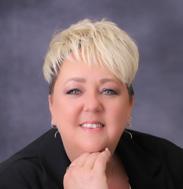
Holly Smith has been in the property management industry for over 20 years throughout Southern California. Holly is currently Executive Director of Comunity Associations Institute of Coachella Valley. Holly can be reached by calling (760) 341-0559 or email holly@cai-cv.org.
The Community Associations Institute – Coachella Valley Chapter (CAI-CV), established in 1983, is a nonprofit organization dedicated to serving the educational, business, and networking needs of community association professionals and homeowner leaders throughout the Coachella Valley. As part of an international organization, CAI-CV provides vital resources, training, and legislative advocacy to help homeowners associations (HOAs) operate effectively and responsibly. Our mission is to build better communities by equipping board members, community managers, and business partners with the knowledge and tools necessary to lead with confidence, make informed decisions, and foster thriving, well-managed neighborhoods. Membership is open to all who serve HOAs. Board members can enroll up to 15 members of their community, including the Board of Directors, committee chairs, and committee members, with one low fee. This offer also extends to cities or other governing agencies that would like to connect with CAI.
If you are a manager or business partner, CAI offers many opportunities for education and credentialing, including the Educated Business Partner distinction, multiple designations, and specialty credentials for community managers.
To inquire about membership, visit www.cai-cv.org/join, call (760) 3410559, or email admin@cai-cv.org
Members have access to our online directory, which contains contact information for all members within our chapter across all membership categories. Advertising opportunities are also available—please contact our office for details.
HOA Living is CAI-CV’s monthly magazine and the official publication of the chapter. Circulation is approximately 800 and growing. A digital copy is distributed free to all members, and a printed version is available with a paid subscription.
If you are interested in submitting an article or advertising, contact us at HOALiving@cai-cv.org.
GENERAL INQUIRIES
Email: admin@cai-cv.org
Phone: (760) 341-0559
CAI-CV, 49950 Jefferson, Suite 130-117 Indio, CA 92201
MEMBERSHIP INQUIRIES AND UPDATES
Membership status/renewals cai-info@caionline.org
Address or information changes addresschanges@caionline.org
Recruiter credit addresschanges@caionline.org
PRESIDENT
MARK DODGE, CMCA, AMS Branch President & CEO Associa – Desert Resort Management
PAST PRESIDENT
JULIE BALBINI, ESQ. Managing Attorney, CV Office, Fiore Racobs & Powers, A PLC
PRESIDENT ELECT
BRUCE LATTA, CMCA Manager, Indio Properties/President, Desert Cities HOA Council
SECRETARY
BG (RET) GUIDO PORTANTE
Director, Mira Vista at Mission Hills HOA
TREASURER
JOLEN ZEROSKI, CMCA VP, Regional Account Executive First Citizens Bank
DIRECTOR
CLINT ATHERTON, PCAM, LSM General Manager, Sun City Palm Desert
DIRECTOR
BRIAH CASTILLO, BUSINESS DEVELOPMENT Ivan’s Painting
DIRECTOR
MANDIE CHLARSON Principlal, NLB Consulting & Elections
DIRECTOR
MICHELLE LOPEZ, CMCA, AMS Director of Community Management, Powerstone Property Mgmt. DIRECTOR
LILY ORTEGA, CMCA Office Manager, Pro Landscape
DIRECTOR
MIKE TRAIDMAN
Treasurer, Mira Vista at Mission Hills HOA Commissioner, CAMICB
NATIONAL CONTACTS
National Corporate Member updates addresschanges@caionline.org
National Professional Directory
Laura Mason, lmason@caionline.org
Dues or multi-chapter additions cashprocessors@caionline.org
JENNIFER JAMES, ESQ. CHAIR
Partner & Managing Attorney of the Coachella Valley, Roseman Law, APC
ASHLEY LAYTON, CMCA, AMS, PCAM CO-CHAIR
Premier Community Association Management
MIKE TRAIDMAN
BOARD LIAISON
Mira Vista at Mission Hills HOA
SEAN ANDERSEN Association Reserves
FELICIA BUSTOS
WICR Inc.
Waterproofing & Construction
SIERRA CARR, CMCA, AMS, CCAM, PCAM
Personalized Property Management
JOHNNY CONTRERAS
Southwest Landscape & Maintenance
ROBERTO ANTONIO FLORES Hidroklear LLC
JAY JARVIS
Homeowner Leader
MIRANDA LEGASPI, EBP, MBA Platinum Security
JESSICA MCCONNELL HOA Invest
LILY ORTEGA
Pro Landscaping Inc.
BRITAIN ROME
Allied Universal
JASON SAVLOV, ESQ. Adams | Stirling, PLC
DAVID SCHUKNECHT, AMS, PCAM, MBA
Personalized Property Management
JOHN SCHUKNECHT, CMCA, AMS LaBarre/Oksnee Insurance
STEVEN SHUEY, PCAM Retired Community Manager
CHRIS SIGLER, B.S.C.E, CDT C.L. Sigler & Associates, Inc.
CREATIVE DIRECTOR & GRAPHIC DESIGNER
RODNEY BISSELL
Bissell Design Studios, Inc. rodney@bisselldesign.com (714) 293-3749
PHOTOGRAPHY
MATTHEW LAWTON, CIC, CIRMS, EBP OCV Insurance Services matt@ocvinsurance.com 760-774-2099
JAY JARVIS Homeowner Leader jayj92260@gmail.com 571-235-5420
The opinions and views expressed in editorial material are those of the individual writer or interviewee and do not necessarily reflect those of CAI-CV, its Board of Directors, or its advertisers.
Unless specifically stated, CAI-CV does not endorse any person, political candidate, or opinion.
The materials in this publication are intended to provide timely, authoritative information to our members. However, CAI-CV does not provide legal, accounting, or other professional services. Readers are encouraged to seek advice from qualified professionals before acting on information contained herein.
HOA Living reserves the right to reject advertising submissions that do not meet our standards. For advertising guidelines, please contact CAI-CV staff.
All submissions are subject to editing for grammar, length, and appropriateness.
Advertisers, please note that print colors may vary slightly due to differences in the printing process.
Associa Desert Resort Management
C.L. Sigler & Associates, Inc.
Fiore, Racobs & Powers, A PLC
Flood Response
Gardner Outdoor and Pool Remodeling
Hotwire Communications
Lloyd Pest Control
Signarama
AMS Paving, Inc.
BRS Roofing, Inc.
Cooper Coatings
EmpireWorks
First Citizens Bank
MC Builder Corp
Powerstone Property Management
Precision Painting & Reconstruction
Accurate Termite & Pest Control
Alan Smith Pool Plastering & Remodeling
Alliance Association Bank
Association Reserves
Banc of California
Charter Communications
Delphi Law Group
Dunn-Edwards, Corp
Epsten, APC
Horizon Lighting
Ivan’s Painting
NLB Consulting & Elections
Patrol Masters, Inc.
SCT Reserve Consultants
Sierra Dawn Estates HOA
Southwest Landscape & Maintenance
SouthWest Security
Sun King Electric, Inc.
Vista Paint Corporation THANK YOU 2025 CORPORATE SPONSORS
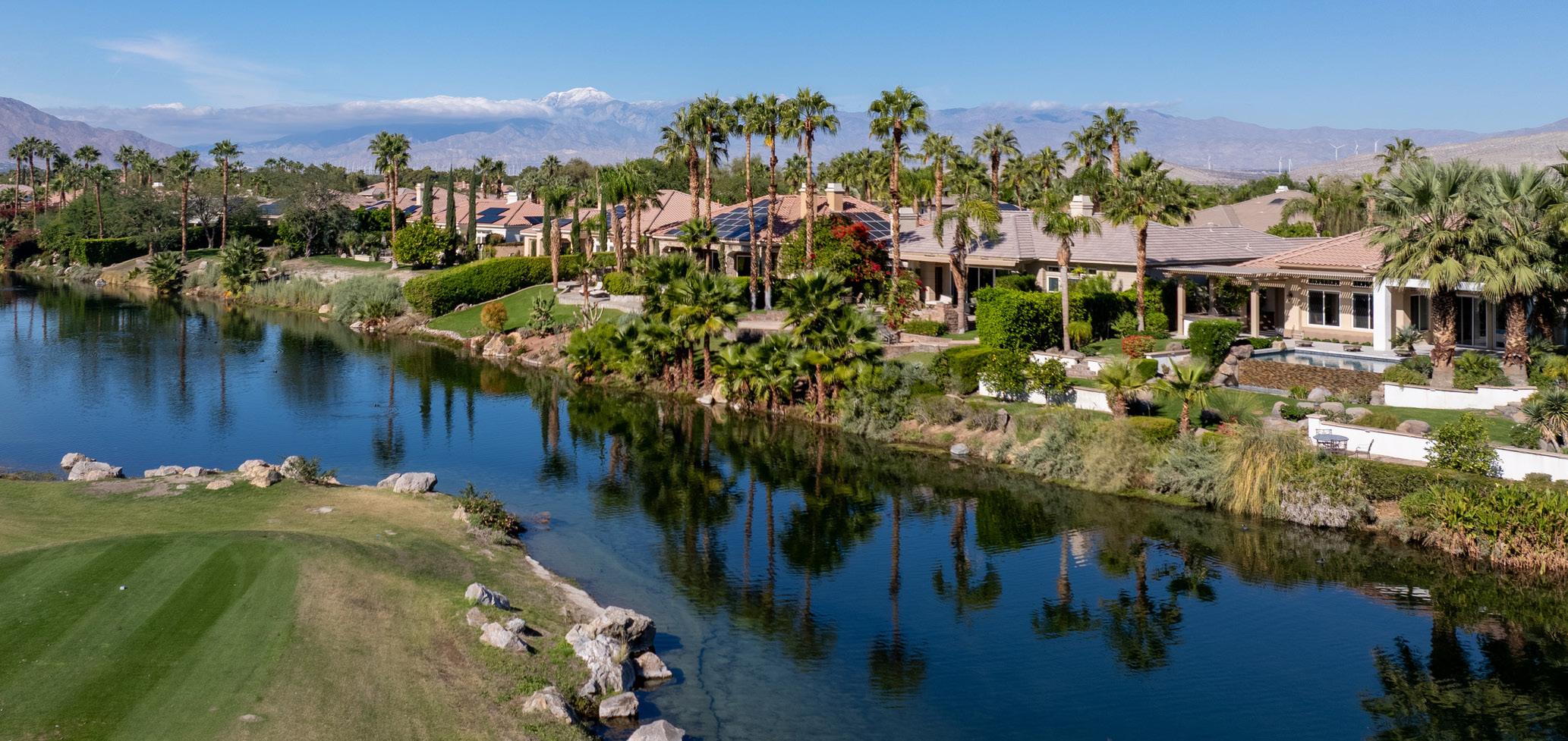



Julie R. Balbini, Esq., Fiore Racobs & Powers, A PLC
Micha Ballesteros, Cartwright Termite & Pest Control, Inc.
Roxi K. Bardwell, Advanced Reserve Solutions, Inc.
Rodney Bissell, Bissell Design Studios, Inc.
Gary Butler, Asphalt MD's
Linda Cardoza, Alliance Association Bank
Will Cartwright, Cartwright Termite & Pest Control, Inc.
Christopher Cellini, Flood Response
Todd Chism, PatioShoppers
DJ Conlon, Poppin Promotional Products
Lori Fahnestock, Powerful Pest Management
Julie Frazier, Frazier Pest Control, Inc.
Victoria Germyn, Teserra
Elaine Gower, The Naumann Law Firm, PC
Michael Graves, SCT Reserve Consultants
Amanda Gray, Harvest Landscape, Inc.
Jennifer James, Esq., Roseman Law, APC
Jennifer Felder, Platinum Security
Erin Kelly, Banc of California
Megan Kirkpatrick, Kirkpatrick Landscaping Services
Jared Knight, Precision Construction & Painting
Katy Krupp, Fenton Grant Mayfield Kaneda & Litt, LLP
Matt Lawton, CIC, CIRMS, OCV Insurance Services
Larry Layton, Kirkpatrick Landscaping Services
Alison LeBoeuf, Sherwin-Williams
Mike Mastropietro, OCBS, Inc.
Chris Meyer, Asphalt MD's
Greg Morrow, Eagle Roofing Products
Fran Mullahy, Conserve LandCare
Bridget Nigh, BEHR Paints
Matt Ober, Esq., Richardson Ober DeNichilo LLP
Lily Ortega, Pro Landscape
Chet Oshiro, EmpireWorks
Mallory Paproth, SCT Reserve Consultants
Elisa Perez, Esq., Epsten, APC
Jay Powell, Ben's Asphalt
Dana Pride, Automation Pride
Mike Rey, LaBarre/Oksnee Insurance Agency
Kelly Richardson, Esq., Richardson Ober DeNichilo LLP
Brent Sherman, Animal Pest Management Services, Inc.
Liz Williams, AMS Paving
Taylor Winkle, Roof Asset Management
Bevan Worsham, AMS Paving
Jolen Zeroski, First Citizens Bank
BECOME AN EDUCATED BUSINESS PARTNER
Call the CAI-CV office or go to www.cai-cv.org for more information.
CAHILL & ASSOCIATES
Mrs. Nicole Royea (760) 835-4639
nicole@cahillcpas.com
CATAPULT ENGINEERING, INC.
Mr. Kirk Wagner (949) 326-7937
kwagner@catapulteng.com
GARDNER OUTDOOR AND POOL REMODELING
Mr. Mark Feldstein (714) 630-6504
markf@gardnerremodel.com
LANDMARK GOLF & LANDSCAPE SERVICES
Mr. Joseph Gill (760) 485-8269 joeg@landmarkgolf.com
RENEWING BUSINESS PARTNERS
FENTON GRANT KANEDA & LITT, LLP
Ms. Kathryn Krupp (949) 435-3800
kkrupp@fentongrant.com
O’LINN SECURITY, I NC.
Ms. Kimberly O’Linn (760) 320-5303 kim@olinnsecurity.com
SCT RESERVE CONSULTANTS, INC.
Mr. Michael Graves, RS (951) 296-3520 mike.g@sctreserve.com
SECURITAS SECURITY SERVICES USA, INC.
Mr. Robert Warcholik (760) 779-0728 robert.warcholik@securitasinc.com
SIGN-A-RAMA
Mr. Jeff Grady (760) 776-9907 jeff@pdsignarama.com
ALBERT MANAGEMENT CORPORATION
Ms. Lori Albert (760) 346-9000 lori.gonzales@albertmgt.com
POWERSTONE PROPERTY MANAGEMENT
Mrs. Michelle Lopez, CMCA, AMS (760) 574-9643 mlopez@powerstonepm.com
ALBERT MANAGEMENT CORPORATION
Ms. Alison Posey (760) 895-4835 alison.posey@albertmgt.com
SEABREEZE MANAGEMENT COMPANY, INC.
Ms. Vanessa Acosta (760) 808-5836
vanessa.acosta@seabreezemgmt.com
SUN CITY PALM DESERT COMMUNITY ASSOCIATION
Mr. Joe Lopez (442) 993-9603
joe.lopez@scpdca.com
VINTAGE GROUP
Ms. Nayeli Quintero (760) 970-5700 nayeli@vintagegroupre.com
VINTAGE GROUP
Ms. Tera Willis, CMCA (760) 485-9475 tera@vintagegroupre.com
ADVANCED RESERVE SOLUTIONS, INC.
Ms. Roxi Bardwell, AMS, PCAM, RS (510) 693-1620
rbarwell@arsinc.com
ASSOCIA DESERT RESORT MANAGEMENT
Mrs. Cari Burleigh, CMCA, AMS (442) 637-8725
cburleigh@drminternet.com
Mrs. Jamie Dodge, CMCA, AMS, PCAM (760) 346-1161
jdodge@drminternet.com
Ms. Kathleen Huffman (760) 346-1161
khuffman@drminternet.com
Mr. Abraham Islas (760) 346-1161
xaislas@drminternet.com
Mr. Donovan McDaniel (916) 730-4030
dmcdaniel@drminternet.com
Ms. Ciara Preciado (760) 346-1161
cpreciado@drminternet.com
Mrs. Tracy Young, CMCA, AMS (760) 399-7310
tracyyoung@drminternet.com
COLBY MANAGEMENT
Ms. Loni Peterson, CMCA, AMS, LSM, PCAM (951) 204-0334
lpeterson@colbymgt.com
LAKES COUNTRY CLUB ASSOCIATION
Mr. Ronald Phipps, CMCA, AMS, LSM, PCAM (760) 568-4321
rphipps@thelakescc.com
LEGACY BUILDER, LLC
Ms. Patricia Nugent (760) 289-5279
villaspropertymanager@gmail.com
OUTDOOR RESORT PALM SPRINGS OWNERS ASSOCIATION
Ms. Synthia Salazer, CMCA, AMS (760) 328-3834
salazar@orps.com
PREMIER COMMUNITY ASSOCIATION MANAGEMENT
Ms. Rhonda Drews, AMS, PCAM (760) 673-8545
rdrews@brcpcam.com
THE MANAGEMENT TRUST
Ms. Cynthia Duffy (760) 863-2399 ext. 6386 cindy.duffy@management.trust.com
NEW HOMEOWNER LEADERS
PALM VALLEY HOMEOWNERS ASSOCIATION, INC.
Mr. Jack Boysen
Mr. Nessim Cohen
Ms. Marjorie Fieldman
Mr. Pete Fortenberry
Mr. Neil Machlis
Mr. Eddie Munoz
Ms. Caren Oliva
CATHEDRAL CANYON COUNTRY CLUB, HOA 2
Mr. Robert Jaworski

By David J. Schuknecht, AMS, PCAM, MBA

Nestled in the sun-drenched hills of Rancho Mirage at 1 Via Bella, Mira Vista at Mission Hills HOA exemplifies what thoughtful community governance can achieve. This 307-unit, gated community, fully built out by Toll Brothers in 2000, has become a model for balanced, upscale desert living under the leadership of President Georgene Fairbanks and Mike Traidman, Treasurer, whose dedication to CAI principles shapes every aspect of community life.
"CAI has been instrumental in helping us maintain best practices," Traidman explains. As an active CAI member, he regularly taps into the organization's resources to inform board decisions, from vendor selection to long-term planning. "We rely heavily on CAI-CV business partners for everything from accounting and security to roofing and legal services. Having access to vetted professionals who understand HOA governance makes all the difference."
This commitment to professional excellence extends to the community's management structure. Desert Resort Management oversees operations, while the five-member board works closely with standing committees on Architectural Review, Social Events, Welcome, Finance, and Landscape. "Make sure your committees are made up of volunteers who are genuinely invested," Traidman advises fellow board members. "That collaborative spirit is what keeps our community thriving."
At just $399 monthly, Mira Vista's HOA fee delivers exceptional value. The assessment covers high-speed internet, fiber optic TV, pool and spa maintenance, tennis and pickleball courts, lush landscaping, and 24/7 guarded gate access—no hidden costs or surprise assessments. "We focus on transparency," Traidman notes. "Residents know exactly what they're paying for, and they see the results daily."
The community's architectural diversity enhances its appeal. Ten distinct California Ranch style floor plans range from cozy two bedroom, two bath homes to spacious four bedroom, four bath layouts, some with casitas and all with attached garages. Current prices span $900,000 to $1,750,000, reflecting the premium of gated living with comprehensive amenities. These single-family homes, built on homeowner land feature low slung roofs, earthy tones, and seamless indoor-outdoor flow that captures the essence of Southwest design. Most of the homes back up to the Mission Hills North Gary Player Signature golf course.
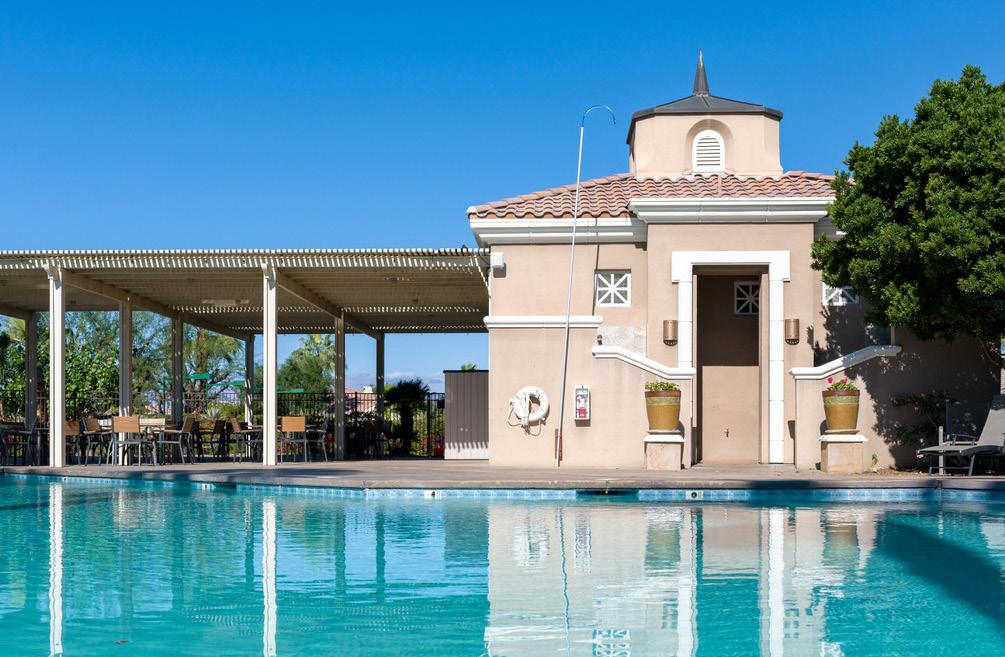
Recreation is woven into daily life at Mira Vista. The sparkling pool and spa area, shaded by palms, serves as a social hub for residents. Tennis and pickleball enthusiasts enjoy well-maintained courts and barbecue facilities host regular gatherings
"It's a safe place to live with low fees and exceptional security," Traidman emphasizes. "But beyond that, it's the sense of community that makes Mira Vista special. Whether it's a sunrise yoga session by the pool or an evening barbecue, these spaces bring people together."
The community's welcome committee ensures new residents feel embraced from day one, hosting events that build lasting friendships. This culture of inclusivity keeps turnover low and satisfaction consistently high.


Mira Vista's commitment to sustainability reflects CAI's emphasis on long-term value. "We're constantly replacing grass with desert-scape," Traidman explains, describing the board's proactive approach to water conservation. These drought-tolerant landscapes not only align with California's water-wise mandates but enhance the natural beauty of the desert setting.
Recent projects include road resurfacing for smoother drives and ongoing maintenance of gates and entryways. "We don't have major special challenges on the horizon, thankfully," Traidman says. "That allows us to focus on enhancements that benefit everyone: projects that preserve property values and improve daily living."
This forward-thinking approach, informed by CAI best practices, ensures the community remains resilient and well maintained for years to come.
Strategic positioning amplifies Mira Vista's appeal. "We're close to Palm Springs, the airport, and excellent schools," Traidman highlights. "It's the ideal valley location: secluded yet convenient."
World-class shopping at The River in Rancho Mirage sits minutes away, as do acclaimed golf courses and cultural destinations like the McCallum Theatre. Families appreciate proximity to top-rated schools, while retirees value the short drive to Palm Springs International Airport. Tucked against the San Jacinto Mountains with expansive valley views, Mira Vista offers the best of both worlds.




What sets Mira Vista apart isn't just its amenities or location: it's the intentional leadership that prioritizes resident well-being. Traidman and Fairbank’s CAI involvement provides the board with access to industry expertise, proven governance strategies, and a network of trusted professionals. "I love a quiet community: one where the board and managers work seamlessly together," Traidman reflects. "That harmony creates an environment where residents can truly enjoy their homes." Homeowner retired Brigadier General Guido Portante who also is a CAI board director and HOA director helps the community follow CAI best practices.



Resident testimonials consistently praise the "beautiful community with great location" and "safe environment with low fees." This satisfaction stems from transparent governance, professional management, and a genuine commitment to community values: principles Traidman credits to CAI's influence.
For those considering desert living, Mira Vista at Mission Hills demonstrates what's possible when professional management meets volunteer passion. Under leadership informed by CAI excellence, this community proves that HOAs can deliver exceptional value while fostering genuine connection. "It's not just home," Traidman says. "It's where life flourishes."
For more information about Mira Vista at Mission Hills, contact Treasurer Mike Traidman at mtraidman@yahoo.com or visit the community to experience desert living at its finest.

David J. Schuknecht, AMS, PCAM, MBA is the Vice President of Personalized Property Management. With credentials including an MBA in Accounting from Louisiana State University and both AMS and PCAM designations, David combines strategic business acumen with deep industry expertise from his decade plus experience. His philosophy is simple: empower great managers with great tools, and they'll deliver great results for their communities. David can be reached at David@hoappm.com or (760) 325-9500.

By Felicia Bustos


The CAI Coachella Valley community is thrilled to welcome Smartwebs to our chapter! Based in Austin, Texas, and proudly serving the community association industry for over 17 years, Smartwebs empowers community management companies and HOAs nationwide with intuitive, all-in-one HOA management software.
Smartwebs is dedicated to building lasting relationships with CAI-CV members, including community association board members, residents, community managers, and business partners. The company is committed to collaborating with our members to simplify community operations through innovative software solutions. Unlike other vendors, Smartwebs doesn’t just provide software they partner with clients to streamline every aspect of HOA management, from accounting to architectural requests, using modern tools designed specifically for the HOA industry.
Their mission is rooted in service and technology, combining powerful automation with user-friendly tools that make community management more efficient and effective.
“We’re excited to engage with CAI-CV members and business partners to collaborate on innovative ways to simplify community operations through software,” said Ross Anderson,

Sales Director and primary CAI-CV contact. “Smartwebs is dedicated to building lasting relationships and empowering our partners through modern, efficient solutions.”
With a team of experienced professionals, Smartwebs offers solutions that save time, reduce complexity, and improve communication across communities. Whether self-managed or working with a management company, Smartwebs helps your community work smarter and thrive.
Company Contacts:
Robert Holte
Ross Anderson, Sales Director randerson@smartwebs.com | 512-508-0794 www.smartwebs.com

Felicia Bustos is the Business and Development Liaison for WICR Inc. Waterproofing and Construction, serving the Coachella Valley and Inland Empire areas. She works closely with homeowners, HOAs, and property managers to ensure properties are ready for every season. Contact Felicia at Marketing@wicr.net or call 760-835-5674.
By E.J. (Jay) Jarvis II

The holidays are just around the corner, and for many people that means lots of festivities with friends and loved ones. Considering all the merriment that’s sure to ensue, it’s important that residents who are celebrating are not only considerate of their neighbors but also take note of the association’s rules. A complete list of our association rules and regulations can be found in our Covenants, Conditions, and Restrictions (CC&Rs), but here are a few key items that are particularly pertinent during the holiday season:

Decking the halls with seasonal ornaments is a great way to bring the holiday spirit home. Many love to decorate outside as well, but before you scurry up that ladder to hang lights on your roof, take a quick peek at the guidelines for outdoor decorations, flags, and signs in the CC&Rs. This will help make sure your outdoor winter wonderland isn’t an association violation.
We hope you all have plenty of chances to eat, drink, and be merry this holiday season. If you plan to host a large get-together or party, please be considerate of your neighbors. Keep the revelry and noise to a minimum, and wind the party down
at a reasonable time. Check the CC&Rs to find out what the association deems acceptable noise levels and what the quiet hours are.
The holidays bring many people together, and that means guest parking. To make sure your guests are covered, look at the CC&Rs or talk to the manager to find out about visitor parking. You’re responsible for providing visitor parking passes to your guests.
“Decking the halls with seasonal ornaments is a great way to bring the holiday spirit home.”
Following the association’s rules helps ensure that all residents can enjoy this special time of year, so please help us by doing your part. Stay safe and have a wonderful holiday season!

E.J. (Jay) Jarvis II is a retired community manager, Past President, Lafayette Village Homeowners Association, Past President and on-site manager Portola Palms Homeowners Association. He is a long-standing member of CAI-CV’s Homeowner Leaders Committee. His hobbies currently are flying, hiking and RVing. Jay can be reached at jayj92260@gmail.com

By Miranda Legaspi, EBP, MBA

With the holiday season upon us, we will find ourselves getting together and most likely in crowded places. While all the socializing can be fun and fill our cups, we unfortunately must remain vigilant.
Apple AirTags are a popular and powerful tool for locating lost items like keys and luggage, but they have also been known to be used without your knowledge, and in the wrong hands, they’ve been known to be misused for unauthorized tracking. If you discover an AirTag that isn’t yours and appears to be following your movements, it’s critical to act swiftly to protect your privacy and, most importantly, your safety.
AirTags are small Bluetooth-enabled devices designed to help users locate personal items like keys, bags, or wallets. They work through Apple’s Find My network, which uses nearby Apple devices to relay the AirTag’s location back to its owner anonymously.
While convenient, this technology can be exploited. A hidden AirTag can transmit your location in real time without your consent, making it a potential tool for stalking or surveillance.
Since their release in 2021, AirTags have been linked to a surge in stalking cases:
• AirTag-related stalking reports rose by 317% between 2021 and 2024, according to Cyber News.
• A class-action lawsuit filed in California includes over three dozen plaintiffs who claim they were tracked by stalkers using AirTags. The suit alleges Apple failed to implement adequate safeguards.
• In Florida, a new law passed in October 2025 criminalizes the use of AirTags and similar devices in the commission of serious crimes like kidnapping, assault, and robbery—with penalties of up to 15 years in prison.
• ABC News reported that some victims believe AirTags played a role in violent crimes, including, in some cases, murder.
These cases highlight how easily AirTags can be hidden in cars, bags, or clothing—often without the victim’s knowledge.
If you receive an alert or suspect you’re being tracked:
1. Don’t go home: If you’re in transit, avoid leading the tracker to your residence. Head to a public place or police station.
2. Use your iPhone to locate it: Tap the alert to open Find My. Use Precision Finding or play a sound to locate the AirTag.
3. Search your belongings: Check bags, clothing, your car, and any items you’ve carried recently.
4. Disable the AirTag: Twist the back to remove the battery. This stops it from transmitting your location.
5. Report it to authorities: Bring the AirTag to the police. They can work with Apple to trace the owner and investigate potential misuse.

Android users won’t receive automatic alerts, but Apple offers a free app called Tracker Detect that can scan for nearby AirTags. It’s less seamless than the iPhone system, but it’s a vital tool if you suspect tracking.
Apple has condemned the malicious use of AirTags and introduced updates to improve safety:
• Shortened the time before an AirTag plays a sound when separated from its owner.
• Improved alert systems for iPhone users.
• Collaborated with law enforcement to trace AirTag misuse.
Still, critics argue that these measures don’t go far enough to prevent abuse.
AirTags are a brilliant innovation when used responsibly. They help people recover lost items, track luggage, and even locate stolen property. But like any technology, they can be misused—and when that happens, the consequences can be deeply personal and frightening.
If you ever find yourself in a situation where an unknown AirTag is tracking you, remember that you are not powerless. Apple has built-in safeguards, law enforcement is increasingly aware of these threats, and you have tools at your disposal to protect yourself.
• Trust your instincts. If something feels off—an alert, a sound, or a gut feeling—don’t ignore it.
• Act quickly and decisively. The faster you locate and disable the device, the less information it can transmit.
• Don’t isolate yourself. Reach out to trusted friends, family, or authorities. You’re not alone, and your safety is worth prioritizing.
• Stay informed. Technology evolves, and so do the ways it can be misused. Keeping up with safety updates and knowing your options makes you harder to target.
Most importantly, don’t let fear override your confidence. You’re capable, resourceful, and supported. Whether you’re a parent protecting your child, a professional commuting late, or a traveler navigating unfamiliar territory, knowing how to respond gives you control.

Miranda Legaspi, EBP, MBA, is President of Platinum Security. and a ASIS Member. She can be reached at mlegaspi@platinumsecurity.com or by calling (213) 296-2644.
By Mike Traidman
Bypassing a midnight timeline, on Saturday, September 13th the California Legislature adjourned the first year of the 2025-2026 Legislative Session. Hundreds of the remaining bills passed by the Senate and Assembly moved to be prepared for Governor Newsom’s review to be signed or vetoed. Governor Newsom has until October 13 to act.
The California Legislative Action Committee, which comprises representatives from all eight California chapters, meets once per year to set priorities for the following year. CLAC’s executive committee, delegates from the chapters, chapter liaisons, and some Executive Directors met on October 24th at Sun City Palm Desert for our meeting and a new delegate training session.
Clint Atherton and Mike Traidman, both appointed chapter delegates, and Holly Smith, Chapter Executive Director, attended. After a discussion of the chapter’s contributions to CLAC, we reviewed the new “Accomplishments for 2025” flyer in this issue of HOA Living.
Dawn Bauman, CEO of CAI, reported on the Federal issues facing our members. Condo lending issues with Freddie Mac and Fannie Mae, Ham radio bills, and FEMA reorganization highlighted the national report.
On State issues, Dawn said CAI is following 2,000 state bills. Major issues are reserve funding requirements, transparency among boards and management companies, and disclosures for management companies.
CLOSER TO HOME, WE DISCUSSED:
AB 130 – This “slipped in” bill will be our number one priority to clean up. The $100 fine just does not work and will cost HOAs' legal fees if suing homeowners to gain rule acceptance is our only route to compliance.
SB 770 – EV charging – We need to clean this bill up as well and not burden HOAs with additional insurance coverage.
Thank goodness the manager licensing bill is off the table for the time being.
SB 679 – This “lot splitting” bill is a concern and will become a priority if the author intends to move it in 2026. The bill was stopped in the Senate Housing Committee this year, but it is technically still alive. In addition, we have significant insurance issues affecting condos and all HOAs that need our attention.
AB 1572 – Watering bill for HOAs. We are hoping to get a CVWD task force started to discuss how they plan to enforce this, which takes effect 1/1/2029.

On November 6th, delegates from 32 states will meet in Washington, DC, and meet with national legislators to discuss issues affecting HOAs. Over 225 CAI members have already signed up to attend.
On December 4th, CLAC will hold a Town Hall, open to everyone, to discuss various priorities and our plans for 2026. Email Holly Smith at hsmith@cai-cv.com if you would like the Zoom link.
By California Legislative Action Committee For any questions call Wendy Van Messel, CMCA 916-791-4750 or office@caiclac.com

Mike Traidman is a Director of CAI-CV, the Treasurer of Mira Vista at Mission Hills HOA, and a Commissioner for the Community Association Managers International Certification Board (CAMICB). Mike can be reached at mtraidman@yahoo.com.





“Whether it is the shade in the heat of summer, the irresistible smell of the blossoms, or the fruit for an old family lemonade recipe, we all have our reasons why these trees have become such a valuable part of our lives and landscape.”
By Thomas Guarneri
Ihave such fond memories of growing up near the citrus groves outside our HOA. Every spring, the scent of the blossoms was a powerful signal, the change in seasons, the promise of longer days, and the near finish of the school year. That sweet pungent aroma meant summer vacation was just around the corner. We used to roam those orange groves, taking little adventures into the dark, shaded canopies where we would find all sorts of treasures and mysteries. I remember catching my first snake there, practicing target shooting with our wrist rockets, and having epic "orange fights” where we would launch rotted oranges at each other, laughing hysterically for 5 minutes straight whenever a good ol’ rotted one exploded on a friend across the orange grove.
Citrus trees have always been significant to me. Growing up in Redlands, citrus groves were an iconic cultural element of our community. As I entered my professional career as an arborist, that same love never faded; citrus tree management and care became a central focus of my work due to the numerous client requests I received. I was not the only one who valued them; they are important to many people in Southern California. Whether it is the shade in the heat of summer, the irresistible smell of the blossoms, or the fruit for an old family lemonade recipe, we all have our reasons why these trees have become such a valuable part of our lives and landscape.
For decades, citrus has been one of the Coachella Valley's top crops. The region's warm climate allows for early and high-quality harvests each year. Because the fruit is ready here before other parts of California, local growers often secure a premium price window for both domestic and international sales. The Valley's long hot days and cool nights work together to send the sugar content through the roof, resulting in fruit with superior color and flavor. Institutions like UC Riverside and the Desert Research Extension Center have long utilized Coachella citrus groves for critical research on irrigation, heat tolerance, and pest management specific to desert conditions.
While citrus thrives here, homeowners may experience a few common issues when growing citrus in the Coachella Valley. These include heat stress and sunburn, especially problematic on young exposed branches, and salinity stress, a common problem due to the high salt content in both the soil and the region's irrigation water. Additionally, alkaline soils are a concern because these high pH conditions limit the availability of
key micronutrients, leading to deficiencies. Pests and diseases are also a factor, with key concerns being Asian Citrus Psyllid, citrus thrips, citrus red mites, six-spotted mites, Phytophthora root rot, and fruit splitting, which is often related to irregular watering or nutrient imbalance.
When creating a fertilization program for citrus, professional horticulturists consider several key components, all rooted in soil health. Proper soil pH is one of the most critical factors determining nutrient availability. Most desert environments naturally lean toward higher alkaline pH due to limited rainfall and the accumulation of minerals, such as calcium carbonate, in native soil. Electrical Conductivity, or EC, measures the amount of dissolved salts and nutrients in the soil. High EC is the primary indicator of salinity, making it difficult for the tree to absorb water even when water is available. EC also indicates the overall nutrient load.
The actual nutrient content is arguably the most important factor for growing healthy citrus. There are sixteen essential plant nutrients. When we send soil samples to the lab, we look at major nutrients like Nitrogen, Phosphorus, and Potassium, secondary nutrients such as Calcium, Magnesium, and Sulfur, and micronutrients like Iron, Manganese, and Zinc, which home gardeners often need to supplement.
Beyond soil health and fertilization, successful long-term citrus care also depends heavily on proper maintenance practices. Improper pruning increases stress, which can compound the problems listed above and lead to tree decline. Proper pruning involves minimal removal of leafy material. It should primarily focus on removing deadwood and on clearing any remaining fruit from last year before the new season's fruits begin to develop. Keep in mind that some varieties, like certain lemon trees, are considered everbearing and can yield fruit multiple times a year. These trees, along with grapefruit varieties, typically require more frequent fertilization than other citrus varieties to maintain their health and production. Caring for citrus in the desert requires understanding the unique environmental challenges it faces. Still, the rewards, a beautiful, fragrant landscape and delicious fruit, are undoubtedly worth the effort.
Thomas Guarneri is the Technical Horticulture Manager Southwest Landscape & Maintenance Inc. and he is a ISA Certified Arborist #WE-12749A. Please contact Thomas at thomas@swlandscape. net or call (909) 855-1447.
“Proper soil pH is one of the most critical factors determining nutrient availability."

“The actual nutrient content is arguably the most important factor for growing healthy citrus.”
“Proper pruning involves minimal removal of leafy material. It should primarily focus on removing deadwood and on clearing any remaining fruit from last year before the new season's fruits begin to develop."
On November 21st, CAI Coachella Valley hosted a Legislative Update at Sun City Palm Desert, featuring a distinguished panel of legal experts: CLAC Advocate Louie A. Brown, Esq. of Kahn, Soares & Conway, LLP, Sandra L. Gottlieb, Esq., CCAL of SwedelsonGottlieb, and Steven Roseman, Esq. of Roseman Law, APC.
We were also honored to welcome several distinguished guests, including Frank Ruiz from Congressman Raul Ruiz’s office; Oscar Ortiz, Councilmember from the City of Indio; Dirk Voss, Councilmember from Desert Hot Springs; Lorena Richey from the City of Palm Desert; and Stephanie Nunimaker with CVWD.
The panel provided members with critical insights on current and upcoming California legislation impacting community associations. Key topics included AB 130 addressing fine caps and enforcement procedures, SB 410 covering SB 326 report requirements, SB 770 on EV charging station insurance changes, SB 625 streamlining disaster reconstruction, AB 1154 regarding ADU owner-occupancy requirements, and SB 31/AB 1572 on reallocating reserves and turf watering restrictions.
This was a well-attended event, with a tremendous showing from our business partners exhibiting at their booths, and managers who braved the rainy weather to participate in one of the most vital programs of the year.
Attendees left with a deeper understanding of how these new and developing laws will affect governance, operations, and compliance for community associations, equipping them to make informed decisions in the year ahead.








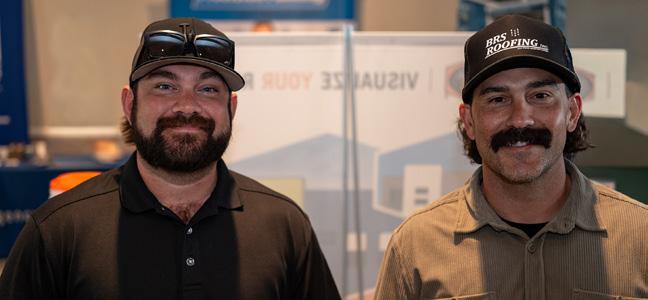






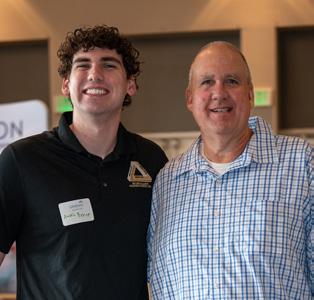





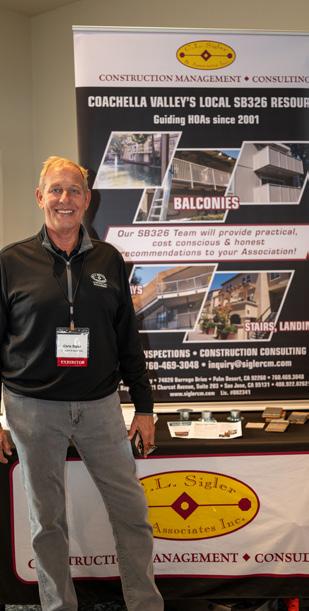









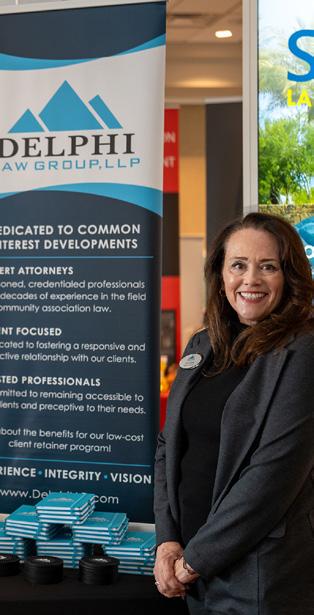



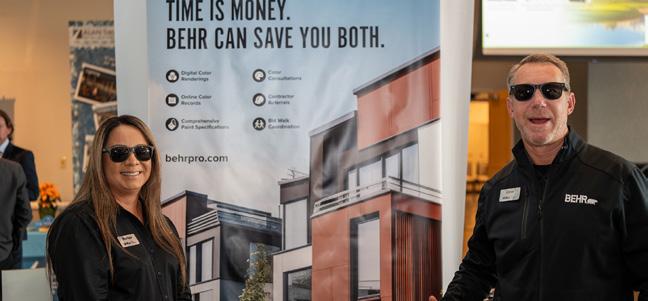




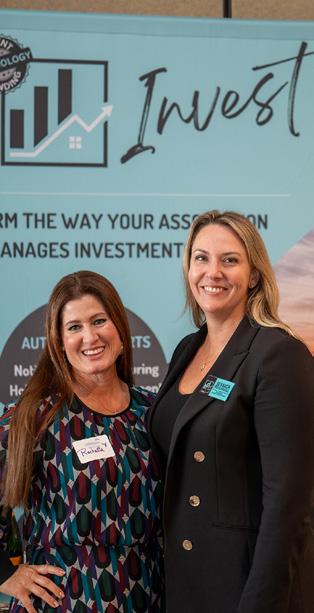








NOTEPAD SPONSOR
Gardener Outdoor & Pool Remodeling
PEN SPONSOR
Re-Bath
GREETING SPONSOR
RE-BATH
SCHOLARSHIP SPONSOR
Epsten, APC
EXHIBITORS
Accurate Termite and Pest Control
Action Property Management
AD Magellan
Alan Smith Pools
AMS Paving, Inc.
Atomic RFID
Behr/Klz
BRS Roofing, Inc.
C.L. Sigler & Associates
Cline Agency Insurance Brokers
Cooper Coatings, Inc.
Delphi Law Group, LLP
Dunn-Edwards Corporation
EmpireWorks Reconstruction and Painting
EntryOne
First Citizens Bank
Gardener Outdoor & Pool Remodeling
HOA Invest
Hotwire Communications
Lloyd Pest Control
Mc Builder, Corp
Nissho of California
NPG Asphalt
O'Connell Landscape
Pacific Western Bank
Patrol Masters
Platinum Security
Precision Painting & Reconstruction
RB Roofing LLC
S.B.S. Lien Services
SmartStreet Powered by BANC of Calif
Southwest Landscape & Maintenance
Swedelson Gottlieb Law Firm
Tinnelly Law Group
Vista Paint Corporation









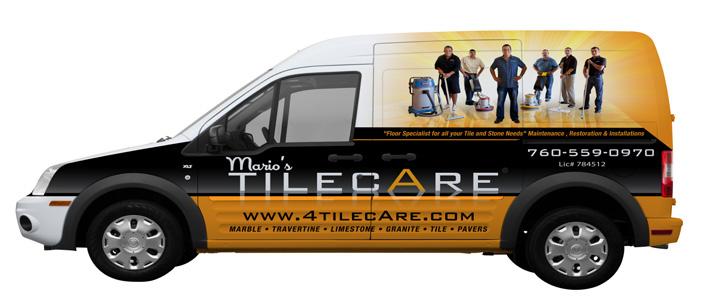






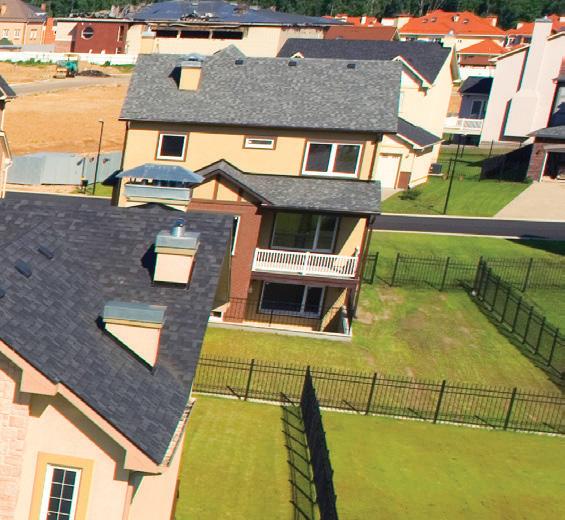
































The California Legislative Action Committee (CLAC) is a volunteer committee of the Community Associations Institute (CAI) consisting of homeowners and professionals serving community associations. CAI is the largest advocacy organization in America dedicated to monitoring legislation, educating elected state lawmakers, and protecting the interests of those living in community associations in California.
CAI-CLAC as a Volunteer Organization
• Is a non-profit, non-partisan volunteer committee comprised of two Delegates and one Liaison from each of the eight CAI California chapters.
• Represents 13 million homeowners and property owners in more than 50,000 associations throughout California.
• Is NOT a PAC (Political Action Committee) and makes no financial campaign contributions.
• Depends solely on the donations of community associations, their boards of directors and those who serve association members.
CAI-CLAC’s Mission
To safeguard and improve the community association lifestyle and property values by advocating a reasonable balance between state statutory requirements and the ability and authority of individual homeowners to govern themselves through their community associations.
CAI-CLAC had some major legislative wins this year through opposition to bills that were unsuccessful, and negotiating amendments to bills we initially opposed, changing our position to neutral. However, we also had two bills in 2025 signed into law against our strongest objections. We will continue to work on legislative solutions to those bills, along with monitoring, evaluating and providing input on new proposed legislation in 2026 affecting community associations and our shared priorities. Additionally, as this year was the first year of the two-year legislative session, some of the bills that CAI-CLAC’s advocates worked on in 2025 with legislators and their staff may come up again in the second year of the session which begins in January 2026.
CAI-CLAC POSITION: OPPOSED – BILL UNSUCCESSFUL
This proposed legislation sought to make unnecessary changes to fourteen sections of the Davis-Stirling Act and add two new sections dealing with association management and meeting procedures. Most changes would drastically increase cost and exposure to litigation. The bill failed passage in the Assembly Housing and Community Development Committee.
CAI-CLAC POSITION: SUPPORT – SIGNED INTO LAW
This bill adds commercial property with policy limits of $10,000,000 or more to the cancellation moratorium list. This bill was signed into law by the Governor and will be effective as of January 1, 2026.
CAI-CLAC POSITION: OPPOSED – BILL UNSUCCESSFUL
The proposed legislation sought to prevent homeowner associations from imposing Covenants, Conditions and Restrictions (CC&Rs) that prohibit or unreasonably restrict housing developments or urban lot splits on single-family zoned districts statewide. This bill failed passage in the Senate Housing Committee.
CAI-CLAC POSTITION: NEUTRAL – RE-REFERRED TO COMMITTEE
This bill makes changes to the contracts entered into under the Net Energy Metering (NEM) program. Recent amendments deleted the language that sought to reduce the contracts for reduced energy costs from 20 years to 10 years. This bill was re-referred to the Senate Rules Committee for potential action in 2026.
CAI-CLAC POSITION: NEUTRAL – SIGNED INTO LAW
In its final form, this bill requires all reports prepared by inspectors as required by SB 326 (Civil Code §5551) contain certain specific information, including but not limited to: the total number of units in the condominium project, the number of exterior elevated elements in the condominium project, and the total number of inspected exterior elevated elements identified as posing an immediate threat to safety. Additionally, the reports of inspectors are now included in the definition of associations records and must be available for member inspection for two inspection cycles. Numerous amendments were made to this bill to eliminate requirements that were extremely onerous for inspectors and likely would have greatly decreased the number of inspectors willing to perform inspections of condominium projects due to liability concerns. This bill was signed into law by the Governor and will be effective as of January 1, 2026.
Reconstruction of Destroyed or Damaged Structures
CAI-CLAC POSITION: NEUTRAL – SIGNED INTO LAW
As originally introduced, this bill included language regarding the definitions of a disaster and residential structures that were ambiguous and confusing and was therefore opposed by CAI-CLAC unless amended. However, in its current form with requested amendments, this bill makes any rule or governing document unenforceable if it blocks the rebuilding of a substantially similar home after a declared disaster. It also creates an expedited architectural review process for rebuilding after a declared disaster. This bill was signed into law by the Governor and will be effective as of January 1, 2026.
CAI-CLAC POSITION: OPPOSED – AMENDED INTO AB 130
This bill, among other things, sought to create a one size fits all approach that would place an arbitrary cap on the fines issued by HOAs at $100 per violation. This bill is now dead because the contents of this bill was amended into AB 130.
CAI-CLAC POSITION: OPPOSED – BILL SIGNED INTO LAW WITHOUT PUBLIC COMMENT
This bill was a gut and amend on June 27, 2025, as a budget trailer bill. This means it included last-minute amendments to the pending budget bill and therefore bypassed and avoided the standard procedures for reviewing bills and obtaining input from the public. The amendments included numerous issues with a primary focus on amending the California Environmental Quality Act (CEQA). However, other elements were included, including language from SB 681 to cap the fines an association can charge at $100, unless “the violation may result in an adverse health or safety impact on the common area or another association member’s property.” The bill was signed immediately by the Governor and went into effect on June 30, 2025.
CAI-CLAC POSITION: OPPOSED – BILL SIGNED INTO LAW
This legislation deletes the requirement for a homeowner who installs an EV charger in the association’s common area to obtain a certificate of insurance that names the association as an additional insured, creating additional liability for the association. This bill was signed into law by the Governor and will be effective as of January 1, 2026.

CCAM
Stacie Donnelly is the CFO of CFM, a firm providing financial management services to common interest developments since 1975. Stacie joined the firm after graduating college in 1994. She is the daughter of Herbert Krauss who started the business in 1975, and Linnea Juarez who continued the business, and formed CFM after Herbert’s passing, in 1980.
Stacie is a past board member of the California Association of Community Managers (CACM) serving a three-year term. She earned the Certified Community Association Manager (CCAM) certification in 1997 from CACM. She was awarded the prestigious Professional Community Association Manager (PCAM) designation in 2000 from the Community Associations Institute (CAI), the highest designation awarded in the industry for managers. She also served a 6-year term on the Board of Directors for the Bay Area and Central California Chapter of CAI. At the end of her term, she served in the role of President of the Chapter.
Stacie began volunteering as a member of the Legislative Support Committee (LSC) supporting the efforts of CAI’s California Legislative Action Committee (CLAC) in 2014. She is currently serving as the 2025/26 Chair of CAI-CLAC’s Executive Committee.

Louie A. Brown, Jr., is a partner with Kahn, Soares & Conway, LLP. He manages the firm’s Government Relations Group representing clients before the California State Legislature and various state administrative agencies.
Louie specializes in providing clients with expert advice in maneuvering through California’s complex legislative and administrative process. He has written numerous laws and played key roles in many of the Legislature’s major accomplishments and budget negotiations over the last decade.
Louie earned his Bachelor of Science Degree from California Polytechnic State University in San Luis Obispo, California and his Juris Doctor from the McGeorge School of Law.
Louie and his wife, Kymberlee, reside in Elk Grove with their three children.

By Jennifer James, Esq.
As the holiday season approaches, communities begin to glow with seasonal lights, festive displays, and the familiar excitement of annual traditions. For community associations, it is also the time of year when questions inevitably arise about what the board may and may not regulate regarding holiday lighting and décor. While most associations adopt rules and regulations to maintain aesthetics, recent case law reminds us that neutrality and consistency are essential when regulating anything that may involve religious expression.
California law supports reasonable rules and regulations, which could include establishing timeframes for installation and removal of decorations, and regulating brightness, noise, and safety-related concerns. These types of restrictions are generally upheld because they address legitimate issues affecting the community, such as visual uniformity, disturbance to neighboring homes, and potential electrical hazards posed by outdoor lighting.
“EVEN FACIALLY NEUTRAL
RULES CAN CREATE LIABILITY IF THE ENFORCEMENT PROCESS SHOWS EVEN A HINT OF RELIGIOUS BIAS.”
The area that requires the most caution involves religious displays. A recent Ninth Circuit decision, Morris v. West Hayden Estates First Addition Homeowners Association, 104 F.4th 1128 (9th Cir. 2024), illustrates how quickly a holiday decoration dispute can evolve into a Fair Housing Act claim if an association’s enforcement process strays from neutral decision-making. The Morris case arose from an extraordinarily elaborate Christmas display and fundraiser involving thousands of lights, volunteers in costume, live animals,
music, buses transporting visitors, and crowds large enough to prompt concerns about traffic and neighborhood impact.
Before the homeowners even moved into the community, the board sent a letter stating that the event would likely violate the community’s restrictive covenants. The letter expressly referenced concerns from non-Christian residents and questioned the effect the event would have on the neighborhood. After purchasing the home, the owners proceeded with their holiday display as planned. In response, the association sent additional communications warning of potential violations involving lighting, noise, traffic, and non-residential use of the property.
“BOARDS MUST KEEP THE FOCUS SQUARELY ON OBJECTIVE, DOCUMENTED CRITERIA LIKE LIGHTING INTENSITY, NOISE, TRAFFIC, AND SAFETY HAZARDS.”
Litigation followed, and a jury initially found in favor of the homeowners on multiple Fair Housing Act theories. The trial court later overturned most of the jury’s findings, concluding that the governing documents were facially neutral and enforceable. On appeal, the Ninth Circuit largely agreed with the trial court. The appellate court held that the association was entitled to enforce facially neutral restrictions related to lighting, nuisance, and non-residential use. The court also rejected claims that the association “published” discriminatory statements under 42 USC 3604(c) and declined to impose liability for harassment by other residents because those acts were outside the association’s control.
However, the Ninth Circuit reached a different result on the claim brought under 42 USC 3617, which prohibits intimidation,

“ABOVE ALL, CONSISTENT ENFORCEMENT IS CRITICAL—SELECTIVE ACTION AGAINST ONE RESIDENT BUT NOT ANOTHER EXPOSES THE ASSOCIATION TO UNNECESSARY RISK.”
threats, or interference with the exercise of rights protected by the Fair Housing Act. The court concluded that a reasonable jury could find that some of the association’s actions were at least partially motivated by religious animus, given commentary in internal communications and statements made during community discussions. As a result, the court ordered a new trial to determine whether the association’s conduct created a hostile environment or otherwise interfered with the homeowners’ rights. In short, while the court reaffirmed that associations may enforce facially neutral deed restrictions even when those restrictions affect religious holiday displays, it also made clear that the enforcement process itself cannot be tainted by commentary or conduct suggesting a religious preference or bias.
This case is an essential reminder that boards should keep the focus squarely on objective, documented criteria such as lighting intensity, traffic congestion, noise, crowd size, and safety hazards. When a display has a religious component, the board must ensure that its enforcement actions do not drift into discussions about the belief system underlying the decoration. Even seemingly casual remarks in emails or at meetings can later be framed as evidence of discriminatory intent.
Communities tend to have far fewer issues when expectations are clearly communicated in advance. Establishing a uniform schedule for when decorations may go up and when they must be removed helps avoid misunderstandings. Reasonable limits on flashing lights, amplified sound, and late-night illumination support quiet enjoyment for neighbors. Restrictions on roof-mounted inflatables or unsafe electrical connections address legitimate safety concerns
and are usually well-received. Encouraging residents to use timers is also effective for both energy conservation and consistent enforcement.
Even with well-crafted rules, boards must be careful with enforcement. The focus should always remain on objective factors such as noise, glare, visual impact, traffic, or hazards to persons or property. Document what you observe and why it matters. Avoid commentary about the type of holiday being celebrated or the motivation behind the display unless it directly relates to a legitimate safety or nuisance issue. Above all, consistent enforcement is critical. Taking action against one resident but overlooking a similar violation by another undermines the credibility of the rule and exposes the association to unnecessary risk.
“CLEAR EXPECTATIONS AND REASONABLE RESTRICTIONS HELP COMMUNITIES ENJOY THE HOLIDAYS WHILE AVOIDING CONFLICT.”
The holiday season should be a positive and enjoyable time in any community. With clear expectations, reasonable restrictions, and careful enforcement, associations can support festive expression while maintaining the safety and well-being of all residents. When an unusual situation arises or a display becomes contentious, seeking legal guidance early can help the board navigate the issue while protecting the community and avoiding unnecessary conflict.

Jennifer James, Esq. is a partner and the managing attorney of the Coachella Valley office for Roseman Law, APC. A dedicated member of CAI for more than 20 years, Jennifer is a former CAI-CV Board member and currently serves as chair of the HOA Living Committee. She remains actively engaged in supporting and advancing the common interest community industry. She can be reached at James@Roseman.Law or (760) 760-2000.
By Coachella Valley Water District (CVWD)

• When possible, use the dishwasher instead of washing dishes by hand.
• Maximize water efficiency by only running the dishwasher with full loads.
• Scrape leftovers from plates into the trash instead of pre-rinsing dishes under the tap, before loading the dishwasher.
• Thaw frozen food in the refrigerator, rather than under running water.
• Use properly sized pots for cooking, since larger pots may require more water than necessary for foods to be prepared.
The holiday season often involves more cooking, cleaning, and company, which can result in increased water usage at home. Whether you're hosting festive gatherings or welcoming overnight guests, the following water-wise tips can help you conserve water while spreading holiday cheer in your household.
• Like the dishwasher, only run the washing machine when you have a full load to get the most use out of each gallon of water.
• Skip the extra rinse cycle, unless necessary.
• Pre-treat stains to avoid rewashing items.
• Before holiday guests arrive, check toilets and faucets for leaks and make necessary repairs.
• Install water-efficient fixtures like low-flow showerheads and faucet aerators to reduce water usage.
• Encourage guests to turn off the water to lather when washing their hands or while brushing their teeth and shaving.
• Avoid using the toilet as a trash can, as this can waste water with every flush.
• Use a broom instead of a hose to clean up the yard, driveways, sidewalks, or patios.
• Adjust sprinklers to the forecast or install a smart irrigation controller that automatically adjusts an irrigation system’s run time, based on weather data. Find more information at cvwd.org/rebates.
By incorporating these water conservation tips, you can celebrate the season with savings and have yourself a water-wise holiday! For more ideas, visit cvwd.org/conservation.

By Roberto Antonio Flores
December brings cooler air, festive gatherings, and heavier use of community spas. While holiday decorations go up around the clubhouse, it’s equally important to keep an eye on what’s happening in the water. Heated spas become focal points for relaxation—but also potential sources of risk when chemistry, safety, or equipment are neglected. This season, thoughtful management can keep residents both warm and safe without inflating utility costs.
Spas operate at higher temperatures—typically 100–104 °F (37–40 °C)— which accelerates chemical reactions and sanitizer loss. Maintaining chlorine between 3–5 ppm, pH around 7.4–7.6, and alkalinity between 80–120 ppm is essential. Over- or under-chlorinated water can cause irritation and equipment damage.
Routine water testing at least twice daily ensures consistency, especially when usage increases during weekends and holidays. Remember that warm water also promotes the rapid growth of microorganisms if sanitizer levels drop even briefly.
Many HOAs see utility bills surge during winter. The best way to manage comfort and cost is to rely on hybrid heating systems—solar or electric heat
pumps as the primary source and gas heaters only as supplemental support. Heat pumps operate efficiently even at 45 °F, while solar systems take advantage of sunny California days. This approach aligns perfectly with California’s Title 24, Part 6 Energy Code, which will require all new and replacement systems to use renewable or electric primary heating beginning
Automated water-quality controllers, when properly calibrated, maintain precise chlorine and pH levels, removing guesswork from daily operation. High-grade sensors and ORP monitoring save both time and chemicals, while low-quality devices often drift out of range quickly. Investing in
"Investing in reliable control equipment pays for itself through stable water conditions and fewer service calls, especially during peak holiday usage."
January 1, 2026. Gas will be limited to “boost” duty. Communities that adopt this model early will see immediate cost reductions while ensuring long-term compliance.
December is also a good time to perform a complete safety review. Verify that ground-fault circuit interrupters (GFCIs) protect all spa circuits, lighting, and outlets. Decorative lights or extension cords near water can present hazards if improperly installed. Ventilation systems in enclosed spa areas should be checked to prevent condensation, corrosion, and mold growth. Clear, simple signage reinforces safety and hygiene: Shower before entering, No lotions or oils, Children must be supervised. These reminders reduce contamination and extend filter life.
reliable control equipment pays for itself through stable water conditions and fewer service calls, especially during peak holiday usage.
At Hidroklear, we encourage HOAs to view their pools and spas not just as amenities, but as community assets that reflect care, responsibility, and professionalism. Proper chemistry, efficient heating, and preventive safety inspections keep those assets performing beautifully all year long.

Roberto Antonio Flores is President of Hidroklear LLC, a company dedicated to advancing sustainable, safe, and high-performance aquatic operations throughout the Americas. Roberto can be reached at (602) 6174893 or sales@hidroklear.com
By John Schuknecht, CMCA, AMS

Life in the Coachella Valley offers an unmatched mix of sunshine, scenery, and community living. Between the palm-lined streets, resort-style pools, and mountain views, HOA life here has its advantages. But with those advantages come responsibilities. Understanding how the law ties into your association's insurance is one of the most important.
Under the Davis-Stirling Common Interest Development Act (DSA; the Act), every HOA in California must maintain certain types and limits of insurance. The DSA's requirements are designed to protect an association, its volunteer board members, and individual homeowners in the event of unexpected events.
Here are three key sections that every association should be familiar with.
This section protects volunteer board members from personal liability for their decisions, so long as the association carries the required limit of insurance. For communities with 100 or fewer units, an association must have in place a minimum of $500,000 of per-occurrence directors and officers liability insurance. For larger communities, at least $1,000,000 of per-occurrence coverage must be in place. When boards make everyday decisions, whether approving a repair, signing a contract, or adopting a new policy, this protection ensures that their personal assets are not at risk if they act in good faith and within their authority.
Section 5805 extends that same concept to homeowners. Members are not personally liable for the association's actions if the HOA maintains civil code minimum limits of general liability insurance. The minimum is $2,000,000 per occurrence coverage for associations of up to 100 owners, and $3,000,000 for larger associations. This section ensures that liability for accidents or property damage remains with the association rather than individual owners, provided the association maintains adequate insurance.
Transparency is a core principle of the DSA. Section 5810 requires the association to notify all homeowners if insurance policies are cancelled, non-renewed, or changed. The association must provide notice to the membership as soon as reasonably practicable. It is a safeguard designed to ensure
"Members are not personally liable for the association's actions if the HOA maintains civil code minimum limits of general liability insurance"
"High



that owners are aware of any potential changes to the association's risk protection, especially important in areas like the Coachella Valley, where residents are often part-time or seasonal.
The Coachella Valley's environment brings its own set of challenges. High winds, sudden rain events, and prolonged heat can all create insurance exposures that differ from those in other parts of the state. As insurance markets tighten and premiums rise, understanding these legal requirements helps associations stay compliant and better prepared for changes in coverage availability or cost.
The DSA provides a clear legal framework for HOA insurance in California. Taking time to review your policies and ensure compliance not only protects the association but also strengthens homeowner confidence. Staying informed and being proactive keeps your community legally secure and better positioned to manage whatever conditions the desert may bring.

John Schuknecht, CMCA, AMS, is a former community manager who currently works as an Account Executive for LaBarre/ Oksnee Insurance. John can be reached at 657-207-4789 or JohnS@hoa-insurance.com
























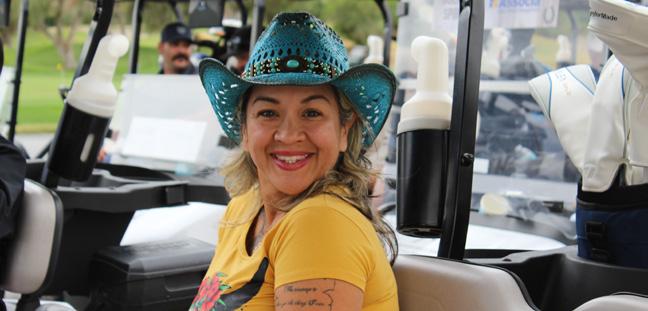














GOLF CART SPONSOR
Associa Desert Resort Management
HOLE SPONSORS
Sun King Electric
Diversified Waterscapes
MC Builder
Platinum Security
Rebath
Life Specialty Coatings
Conserve
LONG DRIVE HOLE
CL Sigler
DROP ON THE GREEN HOLE
Pro Landscape
HAPPY HOUR BAR SPONSOR
Hotwire
Sierra Dawn Estates
GRAND PRIZE
Precision Painting
GREEN SIGNAGE SPONSOR
Quality Green Landscape
FOURSOME SPONSORS
Associa Desert Resort Management
Precision Painting
Flood Response
Southwest Landscape
Empireworks
Alan Smith Pools
Harvest Landscape
Horizon Lighting
Frazier Pest
O'Connell
BRS Roofing
Conserve
MULLIGAN SPONSOR
Guido Portante
Quality Green Landscape
C.L. Sigler & Associates
Fiore Racobs & Powers, A PLC
LIGHTING SPONSOR
Horizon Lighting
GOLF BALL SPONSOR
CL Sigler
By Richard Williamson & Co-author Sean Andersen

Awell-planned budget development calendar of events with tasks, actions, and milestones is required to ensure an association’s annual budget is developed with a solid basis of estimates for planned operating costs. Associations are required by California’s common interest development act to deliver a balanced budget – projected expenses equal assessments levied.
For an association’s treasurer and community management company staff accountant, the easiest component of an annual operating budget to complete may be the reserve funding element. A professionally-developed Reserve Study with all components meeting CAI’s new Reserve Study standards serves as the basis of an association’s reserve funding budget plan. Synchronizing the reserve study process with the operating budget development is essential to creating the best estimate of the next fiscal year assessment requirement.
Next January’s budget development begins in the first week of July (or earlier) under optimal circumstances. To accomplish this, preparations should be made to begin the Reserve Study in a timely manner. Bids for the Reserve Study should be presented to the board of directors in April or May. This will allow for the Reserve analyst to begin work and produce a draft to the board of directors in July. The community management team of the community manager, staff accountant and board treasurer begin pulling together elements of the annual budget using 6-months of actual data from the 30 June end of month financials. The process of capturing and analyzing the cost data takes time. If an association depends on a community management company manager and accountant to develop the
budget, associations must allow more time for these products to be developed. Managers have “n” number of communities they conduct this process for annually. The staff accountant(s) have many, many more accounts than the managers to do this time intensive work annually. A proactive and knowledgeable treasurer’s involvement can make the process work more efficiently and effectively by partnering with the management team.
Data such as utility actual consumption versus planned consumption can be used to project the next fiscal year’s utility costs by capturing the utility rate increases approved by the Public Utility Commission. Requests to business partners regarding the following year’s service contract costs are transmitted with an end of August requested return date.
The community manager provides 6-month actual reserve expenditure data to the reserve study analyst along with planned reserve work projected costs for the next 6-months. Accurate reserve fund expenditure reporting impacts the quality of the reserve study development process through quality and accuracy of data provided by an association. This data will help to project an accurate starting Reserve Balance as well as create an accurate cost history in the component list.
During July the reserve study analyst develops a draft study for the association. Optimally, the draft is provided to the board as soon as it is available for review and comment or questions back to the analyst. The final version of the study is normally revised and finalized once the September financials provide 9-months of data for review and adjustments to operating and reserve study cost estimates. This provides the best understanding of actual expenditures and a shorter projected 3-months of cost data to yield the best estimate budget for board review, discussion, and approval in October.
September is an important month to capture annual cost inflation increase
data. Understanding CPI, PPI, and CPE data is important to assess contract cost increases requested from business partners. The Bureau of Labor Statistics provides Consumer Price Index (CPI) and Producer Price Index (PPI) data in the middle of each month. The Bureau of Economic Analysis provides the Personal Consumption Expenditures Price Index (PCE) at the end of the month. Many people grab the first number published and use it to talk about inflation. However, for association budgeting, a deeper look into the numbers is important. One area of inflation – services – impacts service contracts fairly accurately based on actual experience. It also provides baseline number to use to determine if a business partner’s contract cost increase may be too high and the contract should be competed.
"A WELL ESTABLISHED PLAN OF ACTIONS AND MILESTONES WILL MAKE THE ANNUAL BUDGETING PROCESS RUN SMOOTHER FOR YOUR ASSOCIATION."
Unfortunately, for the reserve study analyst, projecting 30-year cost increases is not so simple. Most of the reserve study projected costs are informed by multiple construction cost inflation indices (CCII) which have a very wide range of cost increases annually. The best CCII tools estimate construction cost inflation by building trade for two years with any degree of confidence. To project out over a 30-year component lifecycle, historical data is used to develop the best approximate estimates across the building trades.
The board needs to hit its milestone of 30 October budget approval and adoption to enable the community management team to produce and transmit the next fiscal year’s budget, reserve study, and state required disclosures to the association membership consistent with public law. Some associations may have rules requiring more than California’s minimum 30-day prior to end of current fiscal year notification requirement which needs to be factored into the budget development timeline. For the community management company, November 15th to 29th is an “All Hands On Deck” event which takes priority over almost all other management actions. Boards that delay budget approvals past November 1st risk extra costs to the association to produce the budget and disclosure package on time or risk losing the ability to use the new budget and assessment without a vote of the membership.
Richard Williamson is the Treasurer of Citrus Square.
Sean Andersen is president of Association Reserves Coachella Valley. He has completed over 4,000 Reserve Studies for properties ranging from small community associations to large master planned communities. He earned the Community Association Institute’s (CAI) Reserve Specialist (RS) designation and has the distinction of being RS #68.





By Chris Sigler, B.S.C.E., C.D.T.

The heat is gone and the holidays are upon us! This is indeed a festive time and many of our communities and residents enjoy celebrating by adding joyful decorations to their homes. Of course that’s wonderful and brings happiness to many people, but it is important to make sure that the decorations are not damaging the HOA’s exteriors in the process. No one wants to be seen as a “grinch” by any means, but damages are avoidable if a few simple guidelines are followed, and should be conveyed to the residents of our communities.
We have all found that rules and laws are important and need to be followed and living in an HOA is the ultimate example of this. There are Civil Codes, Cultural traditions, Codes, Covenants & Restrictions (CC&Rs), Bylaws, and written Rules, Regulations that exist in Community Associations that are vital to follow. They are usually specific and reach into all of our lives, and must be adhered to. Consistency and uniformity are paramount, and each Association has its own way of achieving a well-kept Community. Associations face challenges every day, of various forms. However, when homeowners seem to play “fast and loose” with the rules of caring for and protecting their exterior use common areas at the complex, it can be challenging. However, the rules must be applied to everyone, without favor. One of the challenges is to “police” such breaches of rules that the Association has worked hard to develop.
An HOA policy should be established which outlines what is allowed, and where. Most Associations explicitly do not allow for personal wall hangings to be attached to the exterior of an HOA’s buildings. Some Associations allow for personal art to be placed on a patio or balcony, with restrictions. Others do not allow for anything to be placed anywhere on the exterior, regardless of whether it is “exclusive use common area” or not. It’s tough enough to keep track of who’s doing what at an HOA’s units, so having a written policy is the key to having a chance for uniformity and consistency.
The key to success with exterior care and uniformity is to have a clearly stated rule or policy for all homeowners to follow. If your community allows for lights and/or hangings in an exclusive use area such as a patio or balcony, there should at least be methods and rules as to what can be done, and how it can be attached to the structure. A non-penetrating mount would be the safest method, which would prohibit the drilling, nailing, or screwing of the exterior walls. This would maintain the watertight nature of what the exterior walls are intended for. If the policy allows for exterior wall hangings at exclusive-use areas and the attachment method is not clearly stated, you could be in for a “wild, wild west” scenario that may lead to damage that was not intended by the homeowner.
If the attachment method is not stated in the HOA rule or policy, it is suggested that a method be standardized, and the rule or policy be updated. If the exterior of the structure is to be penetrated or punctured for the sake of installing lights
or a wall hanging, there should at least be a methodology provided by the HOA to provide some protection against unintended damage. For example, consider what surface is being penetrated. Stucco, our most common substrate (wall cladding) in the Coachella Valley, should use special screws and methods. Wood is easier but should be sealed in a similar manner.
Stucco is the trickiest to penetrate because it is hard and water can be “sneaky” and make its way into holes or cracks made without anyone ever noticing. Decayed wood behind the stucco could “fester” and not be discovered until a long time in the future, when it is too late to fix without full replacement. Therefore, a good methodology to use would be clearly stated in a manner such as this:
Methods to deploy or the policy methodology should include pre-drilling pilot holes, followed by using special coated screws. Apply sealant into the hole before installing screws. The process should look something like this:

Important: Fill drilled holes with appropriate sealant before the fasteners are installed to ensure water barrier.
A. Wood Substrate:
Minimum penetration into wood is 1.5".
B. Masonry Substrate:

Minimum penetration into masonry is 1.25".

Even better would be the use of “non-penetrating” methods to hang items on stucco. There are various products available for this option, with the result looking something like this:
A non-penetrating method of hanging lights and/or decorations such as this should also be presented to the homeowners as a best-practice option that will remove the concern for waterproofing.
Installing holiday decorations is fun, but should be done with care, and with a policy that is written, distributed, and followed by the residents to protect the exteriors of their homes, which is both a personal and community asset that needs to be preserved and protected! Just like everything else at our communities, keeping uniformity and consistency are the key; the biggest challenge is policing the recalcitrant or reckless neighbors and homeowners that crop up from time to time! The intention of this article is to provide some guidance for how your decorations can be properly put up, while not creating any long-term damage along the way.
No one is trying to be difficult or create a “ba humbug” atmosphere around the holidays. Decorate to your heart’s content and enjoy them, while keeping the preservation and protection of your homes in mind as you do so!

Apply sealant over the heads of all fasteners to ensure waterproofing.
Chris Sigler is the President and Founder of C.L. Sigler & Associates, Inc., a Construction Management and Consulting firm that has exclusively served the HOA industry for 24 years. He is a Civil Engineer by trade with more than 30 years of Engineering and Construction experience and is actively involved in work scope writing, project management and SB326 inspections throughout the State of California. Chris is certified with the Construction Specifications Institute (CSI) as a Construction Documents Technologist. His firm serves the San Francisco Bay Area in Northern California from their San Jose Corporate office, and the Coachella Valley and Riverside County from their Palm Desert office.

By Mike Traidman
Leena Gurnick, Esq. (formerly, Leena Danpour) serves as the Chair of our Legislative Support Committee (LSC) for the Coachella Valley Chapter of Community Associations Institute (CAI). All eight California chapters of CAI maintain LSC committees, each of which plays a crucial role. Together, the LSCs support our statewide California Legislative Action Committee (CLAC) and ensure we speak with a unified voice on critical legislative issues. Through these collaborative efforts, all eight (8) chapters contribute to our vital lobbying presence in Sacramento, advocating on behalf of California's 50,000 homeowner associations.
A native of Los Angeles, Leena earned her undergraduate degree at the University of Southern California (USC) and her Juris Doctorate from Loyola Law School. Currently, Leena is an attorney at Roseman Law, APC, a comprehensive business and real estate law firm known for its expertise in common interest developments. Leena primarily represents common-interest developments in transactional matters, providing legal counsel to Boards of Directors serving associations throughout California. Leena joined our chapter in 2022 after attending the CAI Legal Forum in La Quinta. Her strong commitment to the organization is evident, as she has expressed interest in joining our Board of Directors to help guide chapter management. Additionally, Leena is considering membership with the CAI Los Angeles chapter.

“Leena Gurnick ensures our chapter speaks with a unified voice on critical legislative issues.”
Leena has been married to Elliott Gurnick for two years, who is also a Los Angeles-based attorney specializing in intellectual property law, with a focus on technology transactions. The couple resides in Century City, on the west side of Los Angeles.
Regarding the Coachella Valley LSC, Leena notes the committee's good performance and consistent attendance. However, she sees room for further improvement, suggesting increased member engagement and the potential for establishing an attendance requirement for committee meetings. She also emphasizes the importance of reinvigorating the "Buck-A-Door" program, which directly supports CLAC and has been a challenge for the committee in past years.
Leena is well-versed in Assembly Bill 130, which creates significant changes to how HOAs may impose fines for
violations of their governing documents, specifically by capping most fines at $100. Leena believes that the implementation of AB 130 (codified in California Civil Code Sections 5850 and 5855) will likely shift the way Associations traditionally enforce their governing documents, resulting in more structured and individualized enforcement measures, less focused on levying fines, and more on non-monetary remedies or legal action. Leena is committed to helping implement potential improvements to the new law through legislation.
Outside of her busy professional life and volunteer work, Leena enjoys spending time with her two nieces. She plays tennis and regularly goes on long walks around her neighborhood. That said, Leena hopes to learn to play pickleball. Due to her work, her travels often include weekend trips to places like Las Vegas and Lake Tahoe. However, she has recently made time for international travel, having visited France, Italy, and Japan.
We sincerely thank Leena Gurnick for her dedicated leadership and valuable contributions to this important committee within our chapter.

Mike Traidman is a Director of CAI-CV, the Treasurer of Mira Vista at Mission Hills HOA, and a Commissioner for the Community Association Managers International Certification Board (CAMICB). Mike can be reached at mtraidman@yahoo.com.

Advertize in the award winning CAI-CV HOA Living Magazine
Click or Scan the QR code to view sponsorshiops

THE FUTURE OF CAI-CV STARTS NOW! CAI-CV

JANUARY

